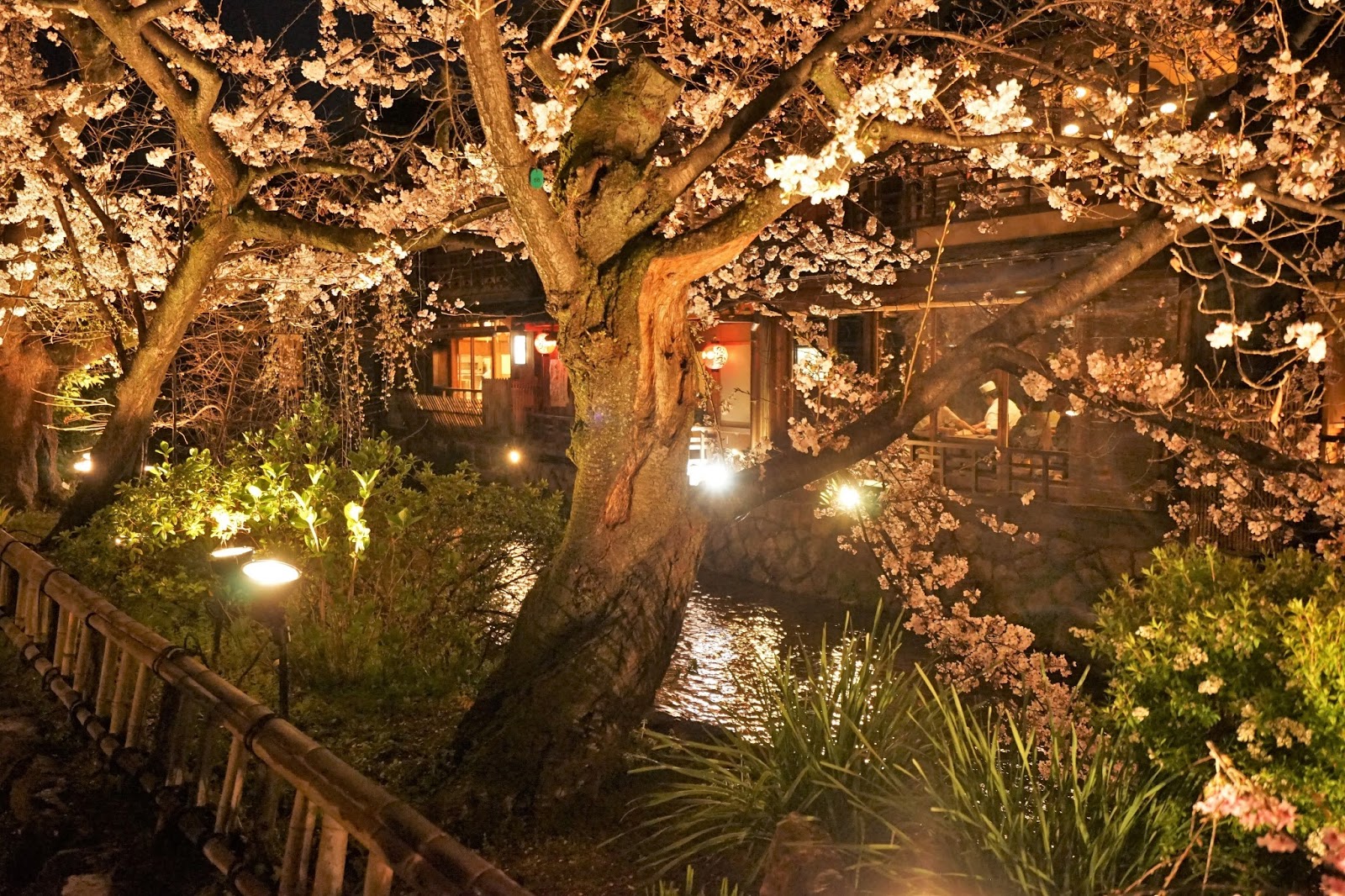Although about half our time will be spent in Kyoto, we are staying in nearby Osaka to find better value during the peak tourist season. After a late night arrival, the wet weather could have been an excuse to sleep in but the jet lag from traveling west means we are up and heading to Kyoto early. The JR train runs frequently and takes only 30 minutes. You just hop on the next train with no seat reservation almost like the subway.
However, the bus we take from Kyoto Station toward Ginkaku-Ji (Silver Pavilion) is packed and crawling. At this point, I am almost regretting not getting a hotel somewhere here in the Higashiyama area. Finally getting off the bus, we find the sign marking the beginning of the Path of Philosophy as well as a whole lot of people.
At Ginkaku-Ji we join a keep-moving-and-don't stop line meandering through the lovely gardens and ponds. Quite a change from my last visit years ago when upon arriving early in the morning just as the ticket office opened, I only saw a groundskeeper working the famed sands.
 |
| Kyoto: a philosopher seeking solitude would be driven mad by this crowd in a morning drizzle. |
 |
| Kyoto: Ginkaku-Ji (Silver Pavilion), not to be confused with Kinkaku-Ji (Golden Pavilion), dates back to 15th century. |
 |
| Silver Pavilion, Kyoto: visitors streaming around meticulously raked sands |
 |
| Silver Pavilion, Kyoto: azaleas add color to the landscape of ponds, trees, and moss. |
 |
| Silver Pavilion, Kyoto: camellias still contribute in their fading glory |
 |
| Kyoto: back on Path of Philosophy |
 |
| Kyoto: Path of Philosophy is along a stream lined with traditional houses some of which serve as cafes. |
 |
| Kyoto: Path of Philosophy |
 |
| Kyoto: Path of Philosophy |
 |
| Kyoto: Path of Philosophy |
 |
| Kyoto: Hyotei is a venerable institution serving meals for over 300 years. |
 |
| Kyoto: not your grandmother's bento box. Lunch at Hyotei with a view of the inner garden includes their signature soft-boiled eggs. |
Hyotei started as a place to serve pilgrims to nearby Nanzen-Ji. After we were fed, we continue to pretend like pilgrims and enter the expansive grounds of this zen temple complex.
 |
| Kyoto: Nanzen-Ji Temple. Going up to the top of the main gate, San Mon, after paying the 500 yen admission and taking shoes off. Yes, definitely worth it. |
 |
| Nanzen-Ji, Kyoto: we happen upon a chanting session where the zen monks do not seem distracted by constant camera clicks by the onlookers. |
 |
| Nanzen-Ji, Kyoto |
 |
| Nanzen-Ji, Kyoto |
 |
| Nanzen-Ji, Kyoto: this dominant cherry tree deserved another look. |
 |
| Nanzen-Ji, Kyoto: maybe it is the extra 400 yen admission but we have the entire Hojo (Abbot's Quarters) to ourselves, a rarity at these popular sites. |
 |
| Nanzen-Ji, Kyoto: the absolute silence found in Hojo here is only broken by occasional fellow visitors. |
 |
| Kyoto: Hojo, Nanzen-Ji |
We head toward Gion where we have an early dinner reservation at a popular unagi restaurant. There are a bunch of people already lined up by 5pm but they are all walk-ins and turned away. A tiny kitchen is run by an older couple serving only six tables, typical of many restaurants in Japan.
 |
| Kyoto: looking for our restaurant on a quiet side street in Gion |
 |
| Kyoto: unagi-don dinner at this popular little restaurant, simply called "U" |
It continues to drizzle but it does not deter us from strolling through the Gion district as lights come on. Throngs of visitors have the same idea of course.
 |
| Gion, Kyoto: a busy thoroughfare, Shijo, in this entertainment district |
 |
| Gion, Kyoto: Shinbashi-Dori, considered one of the most atmospheric streets in Kyoto, especially during the cherry blossom season |
 |
| Gion, Kyoto: Shinbashi-Dori along a stream is lined with restaurants. |
 |
| Gion, Kyoto: Shinbashi-Dori ends with an explosion of cherry blossoms. |
 |
| Gion, Kyoto: Pontocho is a long narrow alley filled with restaurants, bars, and tourists. |
 |
| Gion, Kyoto: Kiyamachi-Dori parallels Shimbashi-Dori and is almost as interesting. |

No comments:
Post a Comment